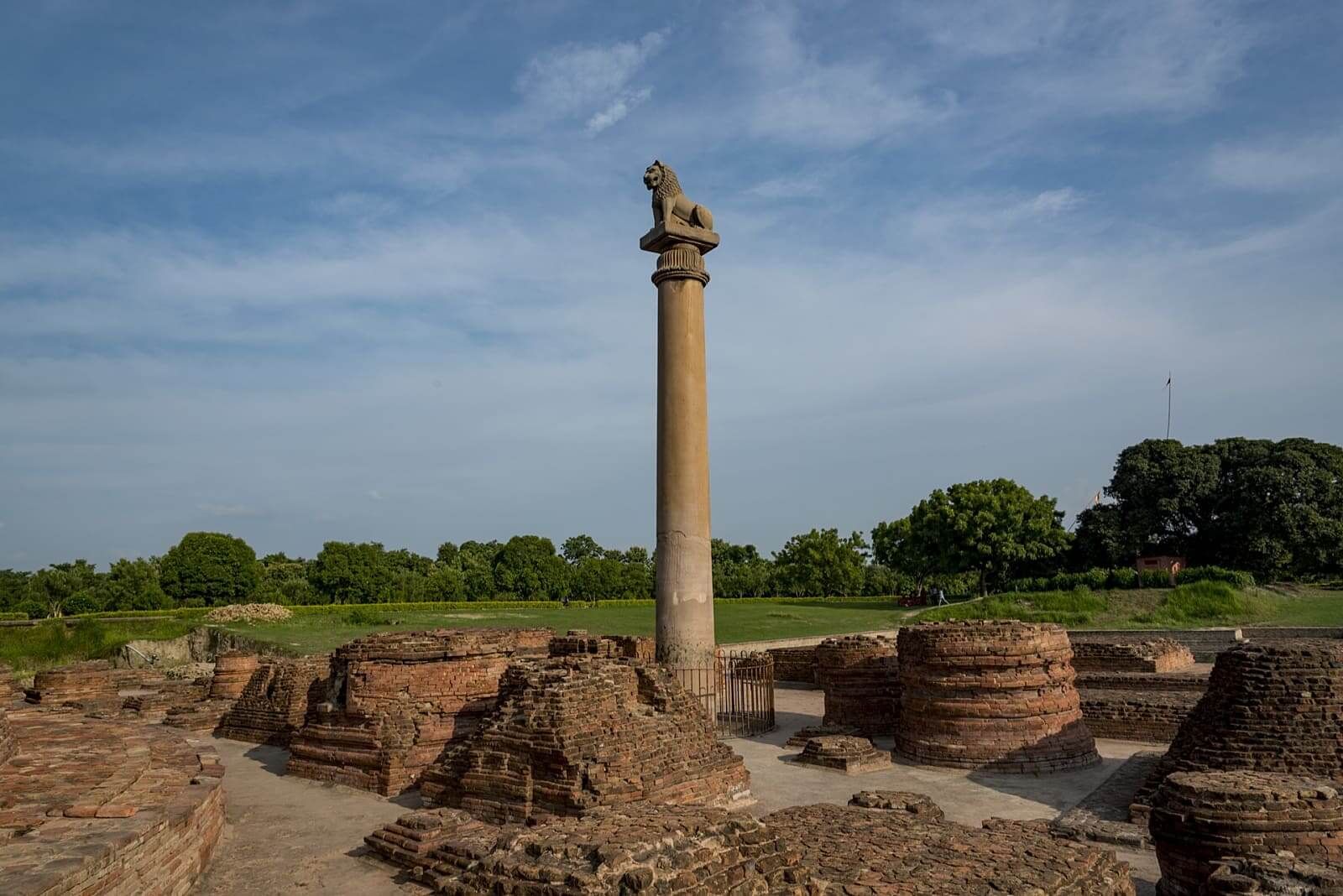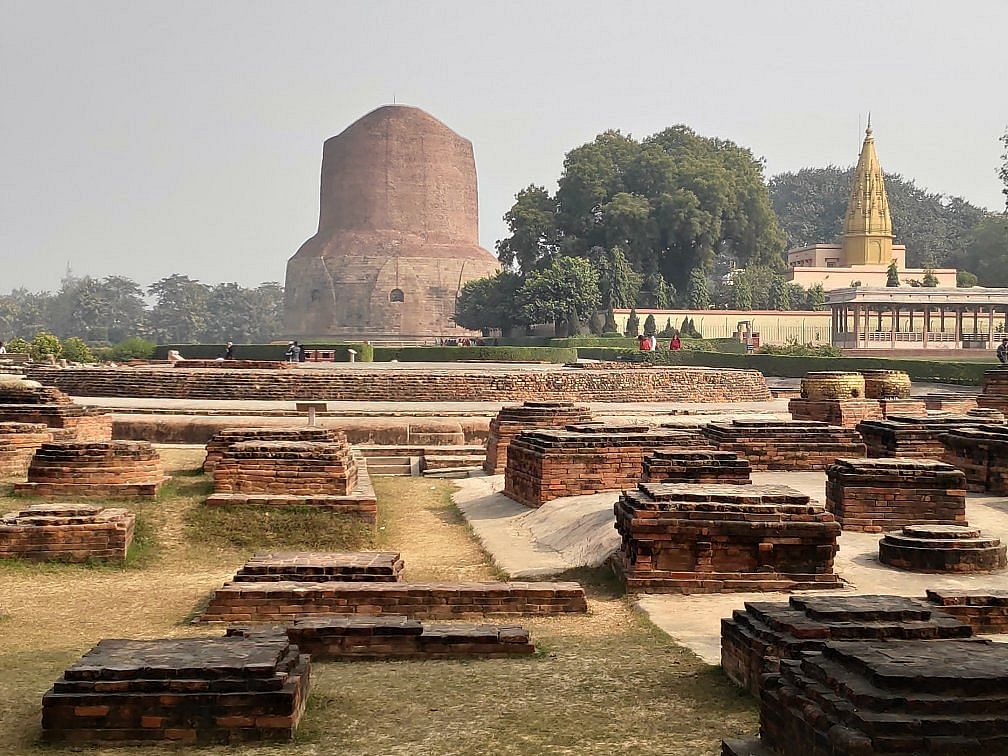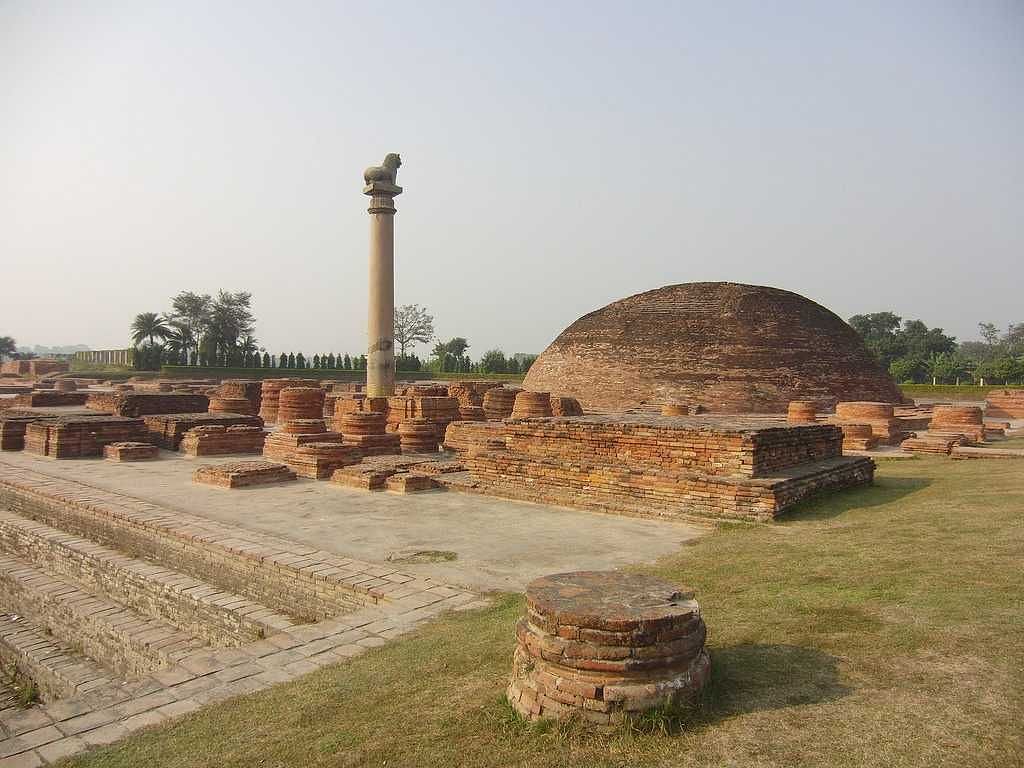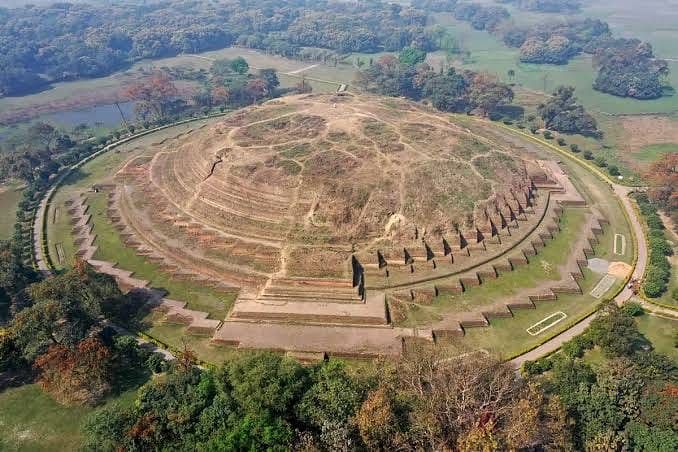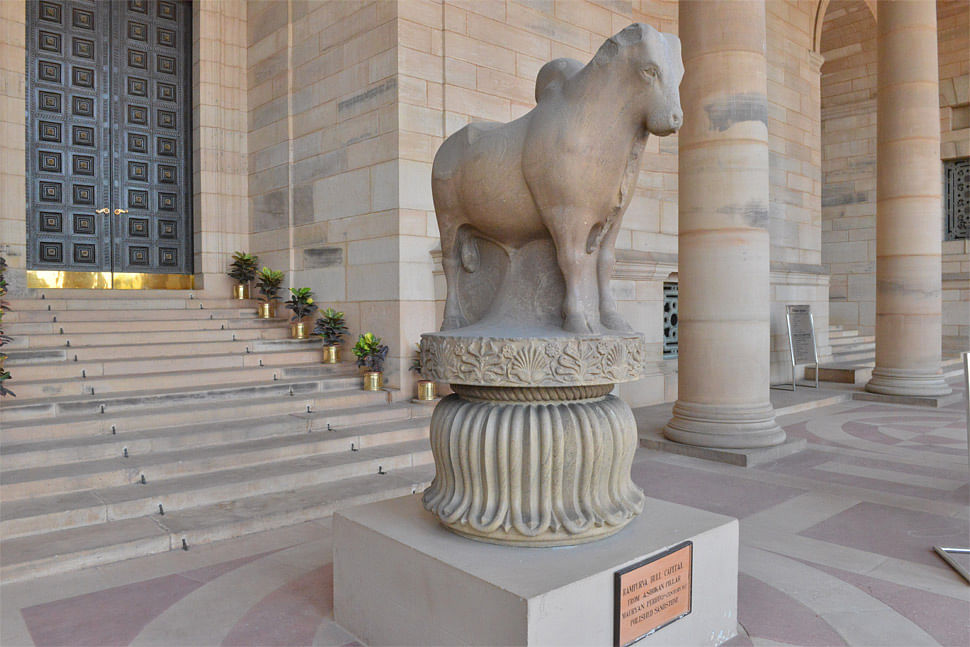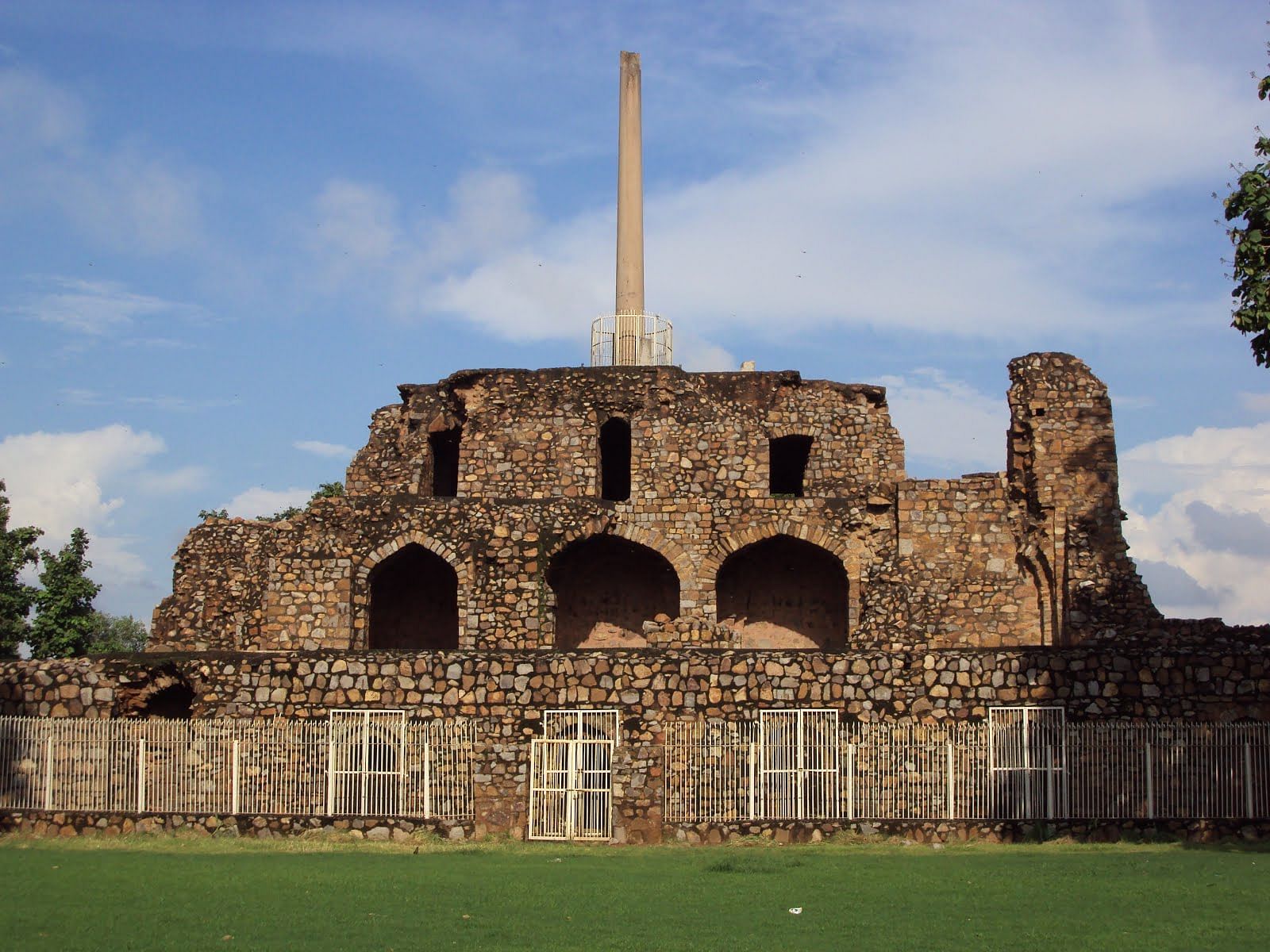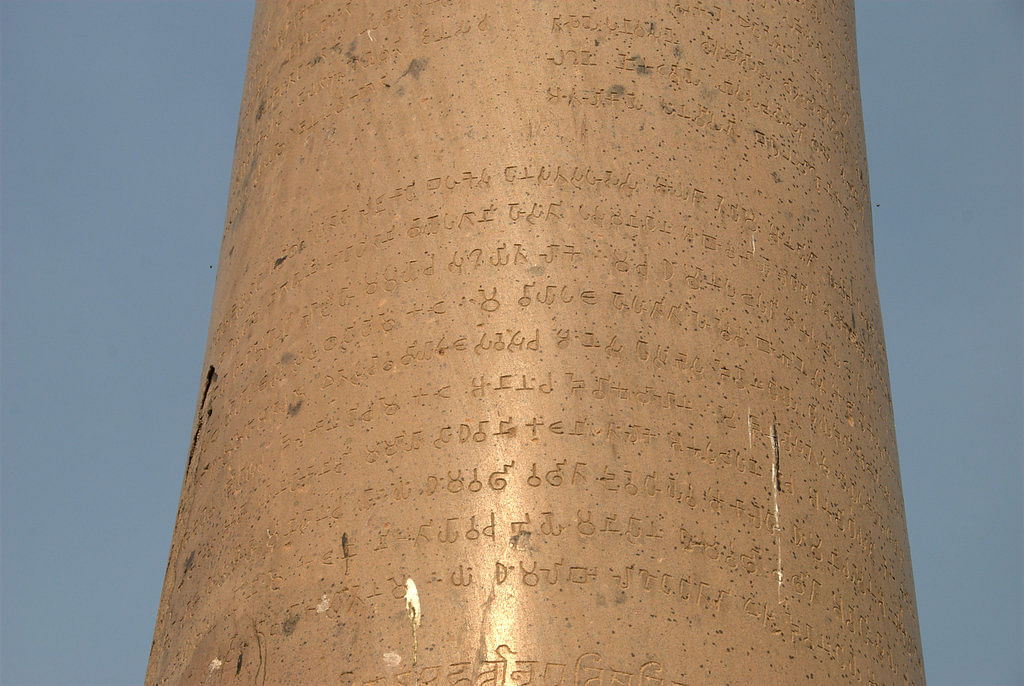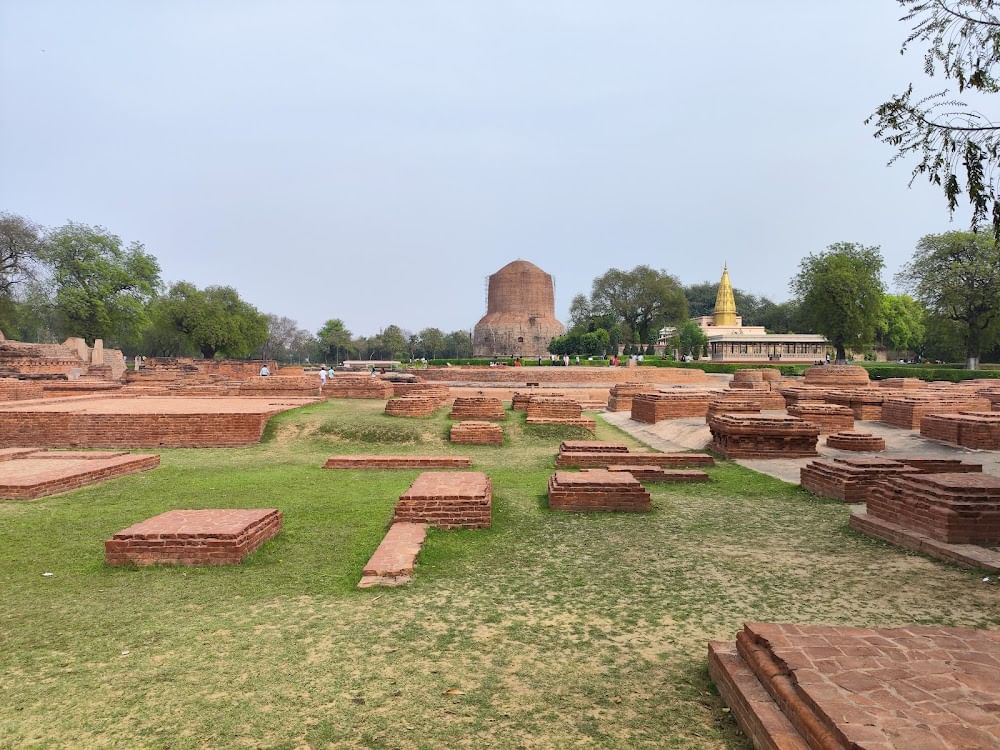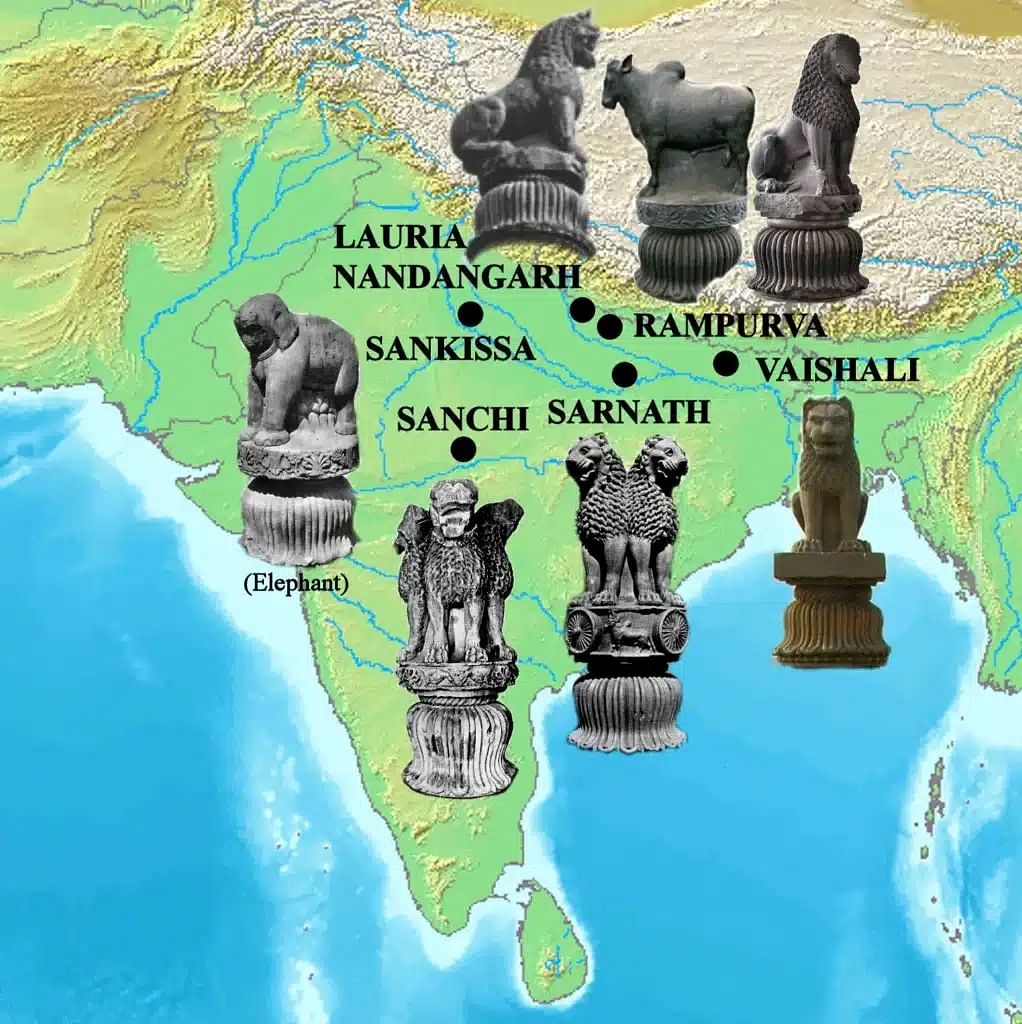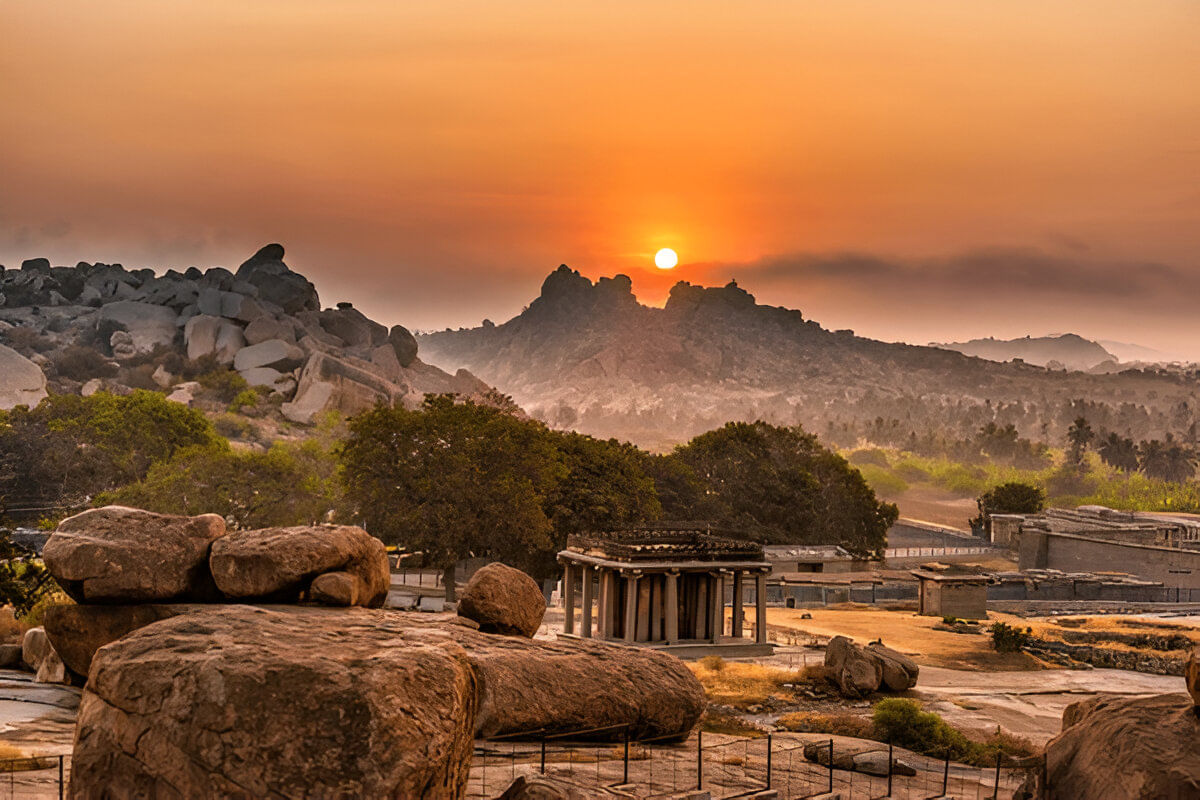The Ashoka Pillars in India are remarkable symbols of ancient Indian history, representing Emperor Ashoka’s journey from a ruler known for his battles to one remembered for his teachings on peace, morality, and compassion. Built during the 3rd century BCE, these Pillars of Ashoka stand in various parts of India today, each with unique stories, messages, and inscriptions known as the Edicts of Ashoka. Originally dotting the landscape in great numbers, these pillars faced the tests of time, weather, and human conquest. You can explore these iconic pillars with our India trips packages .
Today, 20 of these magnificent structures still survive, each one a masterpiece of early Indian stone craftsmanship. What makes them even more special is that they are India’s oldest known stone inscriptions, offering us a rare glimpse into the advanced Mauryan civilization. If you’re a student or traveler seeking quick facts, even a simple 10 lines on Ashoka pillar can help you understand their importance before exploring deeper details.
In this blog, we’ll explore seven prominent Ashoka Pillars in India and uncover the history, significance, and fascinating details of these monuments.
1. The Ashoka Pillar at Sarnath
The Ashoka Pillar at Sarnath in Uttar Pradesh is one of the most famous of all. This Ashoka Pillars marks the spot where Buddha first taught the Dharma after achieving enlightenment. The pillar originally had a four-lion capital known as the Lion Capital of Ashoka. These lions, standing back-to-back, represent strength, courage, and unity, making it a fitting emblem for the Indian state. This original Ashoka Pillar is especially significant because it promotes Buddhist values and symbolizes peace and the spread of wisdom.
The Ashoka Pillar at Sarnath is also known for its smooth sandstone, which has survived thousands of years. The importance of Ashoka Pillars like this one is highlighted by their continued relevance; the lion capital of Ashoka is still seen on Indian currency and serves as the country’s official emblem.
- Timings for Ashok Stambh: Open daily from 9:00 AM to 5:00 PM, closed on Fridays.
- Entry Fee: Rs. 5 for Indian visitors and Rs. 100 for foreigners. This ticket often grants access to nearby archaeological sites, including Dhamek Stupa and the museum.
2. The Vaishali Pillar of Ashoka
In Vaishali, Bihar, we find another significant Ashoka Pillar, called the Vaishali lion of Ashoka. This pillar holds a unique place because Vaishali is considered one of the world’s earliest republics, where the Buddha himself spent a lot of time. Unlike the Sarnath pillar, which has four lions, the Vaishali lion of Ashoka has a single lion seated majestically on top, symbolizing unity.
This pillar of Ashoka carries inscriptions focused on peace, unity, and respect for all beings. Ashoka used this Ashoka Pillar to communicate his ideals to people in this region, urging them to live together harmoniously. The importance of Ashoka Pillars like Vaishali’s goes beyond their religious value, reflecting Ashoka’s efforts to foster a unified, moral empire.
- Timings for Ashok Stambh: Open from sunrise to sunset.
- Entry Fee: Usually free for visitors, making it accessible to all without a formal entry ticket.
3. The Allahabad-Kausambi Ashoka Pillar
The Ashoka Pillar in Allahabad (now Prayagraj), near Kausambi, is a fascinating example of Pillars of Ashoka history. This particular pillar of Ashoka has inscriptions not only from Ashoka’s time but also from later rulers, such as Samudragupta, who ruled during the Gupta dynasty. The Ashoka pillar locations often show us how these structures were valued across centuries, with future rulers choosing to add their marks alongside Ashoka’s.
This Ashoka Pillar has inscriptions about kindness, respect, and a sense of duty toward all beings. The messages here are intended to encourage people to live in harmony, embracing a moral lifestyle. For historians, this ashok pillar offers valuable insights into how Ashoka’s principles were both practical and profound.
- Timings for Ashok Stambh: Open from sunrise to sunset.
- Entry Fee: Generally free for visitors, donations may sometimes be encouraged for site maintenance.
4. The Lauriya Nandangarh Ashoka Pillar
In Lauriya Nandangarh, Bihar, stands one of the tallest Ashoka Pillars in India, rising about 36 feet. Made from highly polished sandstone, this Ashoka Pillar is well-preserved, and its impressive height makes it stand out among Ashoka’s creations. The history of Ashoka’s pillars at Lauriya Nandangarh highlights Ashoka’s attention to both structure and message, with each detail designed to catch attention and inspire awe.
This pillar of Ashoka contains inscriptions promoting peace and non-violence. The list of edicts of Ashoka inscribed here emphasizes compassion, a core theme across all his edicts. Each Ashoka Pillar reflects his desire to establish a kingdom rooted in ethical values, and Lauriya Nandangarh’s pillar is a prime example of this message.
- Timings for Ashok Stambh: Generally open to visitors from sunrise to sunset. Specific timings can vary, so checking locally is recommended.
- Entry Fee: Typically free, but occasional nominal charges may apply depending on preservation efforts or specific events.
5. The Rampurva Ashoka Pillar
The Ashoka Pillar at Rampurva, also in Bihar, features the famous elephant-crowned pillar of Ashoka. This pillar is unique in that it has a carved elephant on top, symbolizing Buddha’s strength, wisdom, and compassion. This pillar of Ashoka marks one of the areas Buddha once visited, giving it immense religious significance.
The importance of Ashoka Pillars such as the one at Rampurva lies in their design and messages, meant to encourage people to lead virtuous lives. Ashoka used this ashok ka stambh to inspire respect for all life and emphasize the need for ethical conduct. The Pillars of Ashoka facts highlight that, for Ashoka, these pillars were a way to bring Buddhist ideals into the daily lives of his people.
- Timings for Ashok Stambh: Generally open to visitors from sunrise to sunset. Specific timings can vary, so checking locally is recommended.
- Entry Fee: Typically free, but occasional nominal charges may apply depending on preservation efforts or specific events.
6. The Delhi-Meerut Ashoka Pillar
In Delhi’s Feroz Shah Kotla complex is an Ashoka Pillar that was originally located in Meerut but was moved by Feroz Shah Tughlaq in the 14th century. This pillar of Ashoka is yet another example of how later rulers appreciated Ashoka’s legacy and chose to preserve these monuments. The Ashoka pillars’ locations around India reveal his vast influence and the respect he earned.
The inscriptions on this Ashoka Pillar encourage respect for different religions and promote tolerance. This message of respect and peaceful coexistence is a core theme across all Pillars of Ashoka and one that still holds relevance today. The importance of Ashoka Pillars like the Delhi-Meerut pillar lies not only in their historical value but also in the timeless wisdom they embody.
- Timings for Ashok Stambh: Open from 9:00 AM to 7:00 PM daily.
- Entry Fee: Rs. 25 for Indian citizens and Rs. 300 for foreign nationals.
7. The Ashoka Pillar at Topra
Another Ashoka Pillar that made its way to Delhi from its original location is the Ashoka Pillar from Topra, Haryana. Feroz Shah Tughlaq also relocated this pillar to Delhi, showcasing its inscriptions highlighting Ashoka’s vision of a peaceful and united empire. The Pillars of Ashoka history in Topra reveals that this pillar of Ashoka served as a vehicle for Ashoka’s beliefs on compassion and respect.
The inscriptions here guide people toward kindness and non-violence, with the list of edicts of Ashoka reflecting his teachings on moral values. This Ashok pillars serves as a reminder of Ashoka’s aim to create a harmonious society, one that values integrity, ethics, and tolerance.
- Timings for Ashok Stambh: Open during standard hours, sunrise to sunset.
- Entry Fee: Free to visit, as this remains an open site
Why the Ashoka Pillars Matter?
The Ashoka Pillars in India are not just historical monuments; they are messages carved in stone, meant to inspire people long after Ashoka’s reign ended. Each pillar of Ashoka serves as a reminder of his transformation from a warrior king to a ruler guided by moral values. For Ashoka, these pillars were more than just structures—they were statements of his commitment to a just and ethical rule. The Pillars of Ashoka facts make clear that he used them to reach his people across a vast empire, emphasizing peace, tolerance, and respect.
For modern Indians, the Ashoka Pillars in India represent a connection to ancient ideals. The teachings on these pillars remind us of the values that can help build a harmonious society. The Ashoka pillar locations serve as pilgrimage sites for Buddhists and historians alike, providing insights into both Ashoka’s life and his dedication to spreading the Buddhist Dharma.
Even when simplified into 10 lines on Ashoka pillar, the messages remain clear—compassion, tolerance, non-violence, and respect for all beings.
Where are the Ashoka Pillars Located?
Wondering where is Ashoka pillar located in India? The Ashoka Pillars in India are spread across various regions, including Sarnath, Vaishali, Allahabad, Lauriya Nandangarh, Rampurva, Delhi, and Topra. Some pillars are well-preserved and stand tall, while others have suffered damage over the centuries. Each Ashoka Pillar is a piece of history that invites us to look back and learn from Ashoka’s journey and teachings.
These Ashoka Pillar monuments show us a ruler’s evolution from conquest to compassion and give us glimpses into a time when rulers used their power to promote ethical values. Through these pillars Ashoka encouraged his people to lead lives of honesty, kindness, and respect, values that are still meaningful today. Each Ashoka Pillar monument is a reminder of the potential for growth and change, showing how a powerful leader transformed into a proponent of peace and unity, leaving behind a legacy that still inspires millions.
Conclusion: Legacy of the Ashoka Pillars in India
The Ashoka Pillars in India are not just monuments but timeless reminders of Emperor Ashoka’s journey from conquest to compassion. Each pillar of Ashoka, whether it's the Ashoka Pillar at Sarnath, Vaishali, or Delhi, carries inscriptions from the edicts of Ashoka, promoting morality, unity, and peace.
These magnificent structures continue to inspire modern society, with the Ashoka Stambh proudly serving as India’s national emblem. For travelers, exploring the Ashoka pillar monument offers both historical insight and cultural depth.
With WanderOn, you can plan enriching heritage journeys and experience the grandeur of these ancient marvels firsthand. The Ashoka Pillars stand tall as guiding beacons of India’s rich past, still relevant in shaping a harmonious future.





